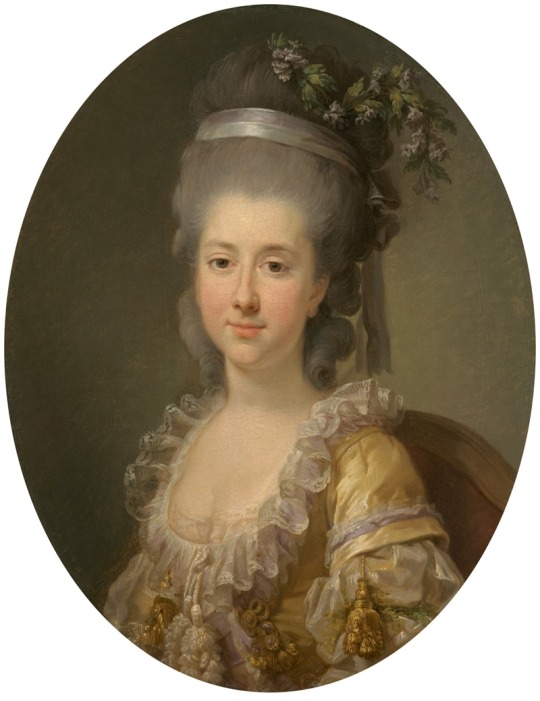#countess potocka
Text
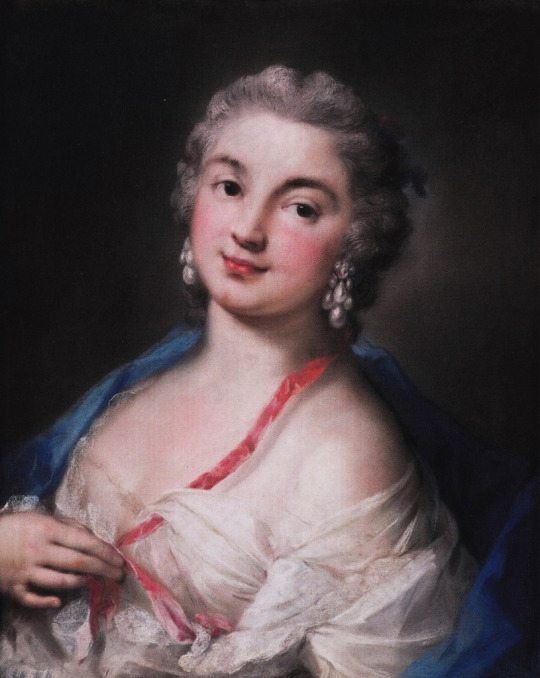
Rosalba Carriera (Italian, 1673-1757)
Portrait of Countess Potocka, n.d.
#countess#rosalba carriera#italian art#countess potocka#1600s#art#fine art#european art#classical art#female portrait#female#portrait#brunette#woman#black eyes#italian peninsula#southern europe#pastel portrait#historical art#europe#european#oil painting#mediterranean#fine arts#europa
13 notes
·
View notes
Text
"A delightful surprise"
Browsing through the memoirs of the hilariously snobbish Countess Potocka a little while ago, I randomly decided to see if she had written anything about Davout.
I was not disappointed. Enjoy Countess Potocka’s otherworldly visit to the Davout couple at Savigny.
[Source: Memoirs of the Countess Potocka, (English translation, 1900) pages 142-144.]
I was taken to several entirely denuded rooms; I was shown into one little less ornamental than the first, but at least there were a sofa and chairs! The lady marshal was not long in appearing. I easily perceived she had dressed up for me, for she was still sticking some pins into her bodice. After a few minutes of languishing conversation she rang to have her husband notified. Then we resumed our painful interview. It was not that Madame Davout was deficient in the ways of the world, or devoid of that sort of cleverness which facilitates intercourse between two people of the same social rank, but there was a certain stiffness about her which might have been taken for haughtiness. She was always Homer’s Juno, or, better still, the strong woman who would not laugh until the Last Day.
The marshal finally arrived in a state of perspiration which bore witness to politeness; he sat down all out of breath, and, holding his handkerchief to wipe his forehead, he took care to moisten it with saliva, so as to remove the dust more thoroughly that covered his face. This rather military freedom tallied badly with his wife’s starched deportment; she was visibly put out by it. Finding myself superfluous in this mute scene I rose, intending to take my leave, but I was asked to stay to luncheon. While the table was being laid we took a walk in the park. There was not a road laid out, the lawns were grown with high grass all ready to become haystacks, the trees clipped during the Revolution were sprouting like thickets; at every bush I left a piece of my flounces, and my lilac laced boots had taken a greenish hue. The marshal urged us on with voice and gesture, promising us a delightful surprise! What was not my disappointment when, turning a clump of young oaks, we found ourselves facing three small wicker huts! The duke went down on the ground on one knee and exclaimed:
“Ah, here they are! Here they are!”
Upon which, modulating his voice:
“Peep—peep—peep!”
Immediately a flock of partridges fluttered about the marshal’s head.
“Do not let the others out until the youngest have gone in again, and give these ladies some bread. They will enjoy themselves like queens,” said he to the yokel who performed the duties of gamekeeper.
And there we were, in the scorching sun, feeding partridges!
With imperturbable dignity the duchess emptied the basket handed to her. As for me, I nearly fainted, and, the thing becoming too much for me, remarked that the sky was overcast and that we were threatened with a storm.
#Davout summoning partridges by going PEEP PEEP PEEP will stay with me to the end of my days#Memoirs of Countess Potocka#memoirs#Louis-Nicolas Davout#Aimée Davout#Napoleon's marshals
49 notes
·
View notes
Text
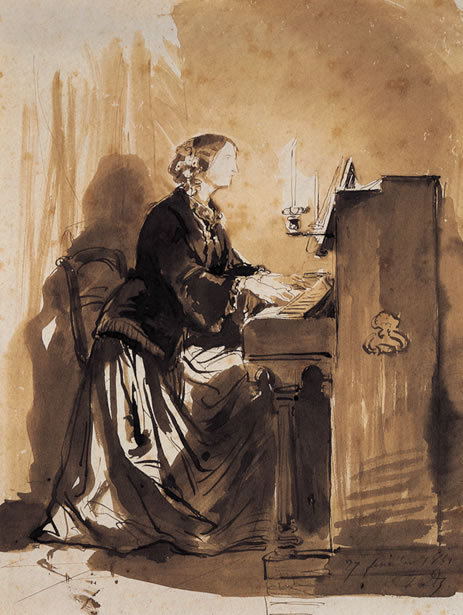
Title: Countess Potocka Playing Piano
Artist: Paul Delaroche
Date: 1851
Style: Romanticism
Genre: Genre Painting
#art history#art#painting#artwork#museums#history#culture#vintage#curators#romanticism#paul delaroche#classicalcanvas
117 notes
·
View notes
Text
Józef Poniatowski’s women.
Part V. The rest of ladies who might have been of some interest to him
Good day everyone and let me share with the rest of information I possess on Prince Poniatowski's love interests. (Though, I have to admit, the ladies from this list were the least likely - from all the mentioned in these series of post - to have some kind of affair with Pepi.
To start I would like by Louise of Mecklenburg-Strelitz, the queen of Prussia.
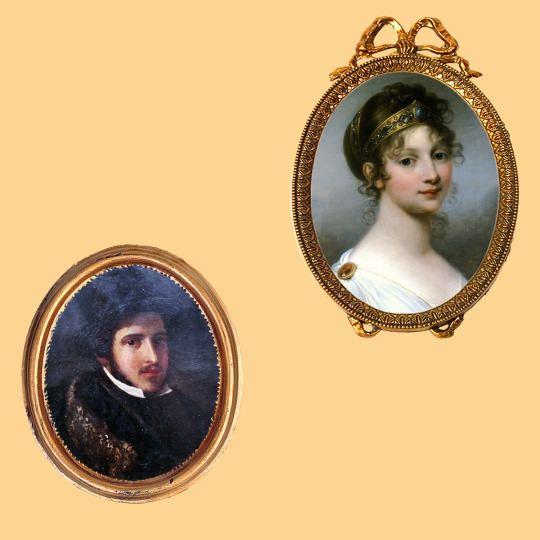
On the right - unidentified artist, miniature portrait of Prince Poniatowski, 19th century. On the left - portrait of Queen Louise by Giuseppe Grassi, 1802.
Prince Józef had the opportunity to meet the wife of the king Frederick William III at least four times, because the royal couple visited Warsaw - which had become a part of Prussia as a result of the third partition of Poland - three times, in 1798, 1802 and 1805. And in 1802 Poniatowski himself had to go to Berlin, to settle the matter of the inheritance left by his uncle Stanisław August.
According to Juliusz Fałkowski, while at Warsaw Prince Józef "…gave a ball and a dinner in the Copper-Roof palace in their honor [the King and Queen of Prussia - A.S.] and was flirting with the Queen everywhere", for which he received the star of the black eagle, although he rather "expected something else from the beautiful queen." After the departure of the royal couple, "he longed a little for the crowned beauty who had easily won his heart in passing."
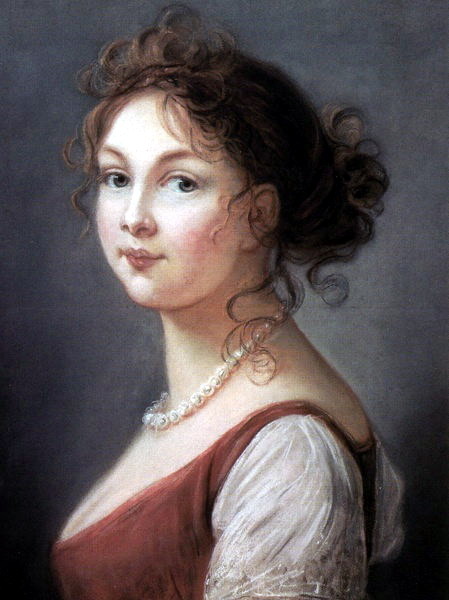
An Elisabeth Vigée-Lebrun painting of Queen Louise, c. 1801
The second source that mentions the relationship between these two is the book by Marian Brandys "Kozietulski i inni", which states (without giving sources, unfortunately) that during Pepi's visit to the capital of Prussia "… it was also said that the beautiful Queen Louise fell in love with in a knightly Pole."
However, if you ask my opinion about the likelihood of an affair between Pepi and the Queen of Prussia, I will say that in my opinion he was "flirting" her to make it easier to solve the inheritance problem. As for the fact that she could also be in love with the prince, I have no opinion because my knowledge about Queen Louise is not very great.
The second lady in today's list will be prince Józef's first cousin once removed, Anetka Potocka (née Tyszkiewicz, the daughter of Konstancja Poniatowska and a grand-daughter of prince Kazimierz, the oldest of the Poniatowski siblings).

On the left - Poniatowski's portrait by Franciszek Paderewski, on the right - Portrait of Anetka Tyszkiewiczówna, Giuseppe Grassi, 1796.
Born in 1779, she was 16 years younger than Pepi, and she remained unmarried for quite a long time, becoming the wife of the Count Aleksander Potocki in 1805. (Marian Brandys, in the biography of Anetka's uncle prince Stanisław, states that some time before 1791 there was an idea to join all the Poniatowski estates marring Stanisław to his niece, but it was eventually abandoned.) The marriage brought them three children, but after 16 years Anetka asked for divorce and then wedded Colonel Stanisław Dunin-Wąsowicz.
During the times of the Duchy of Warsaw, she was a frequent guest at the Copper Roof Palace, visited Paris, witnessed Napoleon's sojourns in Warsaw, with all of those events been described later in her memoirs.
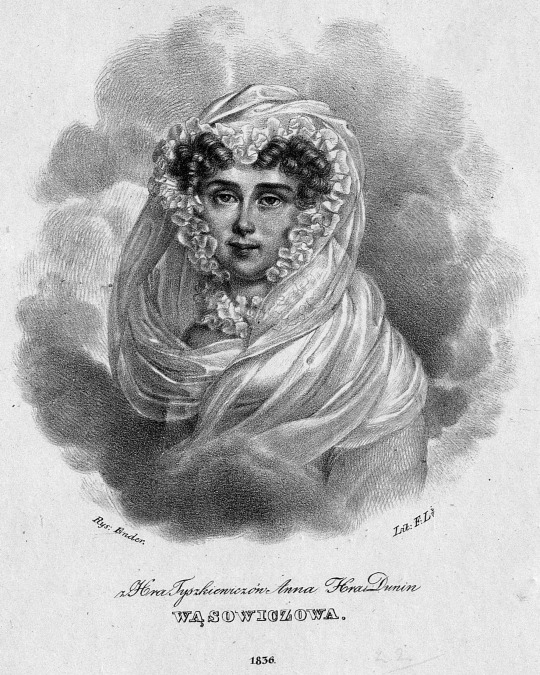
Portrait of Countess Dunin Wąsowicz, Anna née Tyszkiewicz, 1836.
As for her relationship with Prince Józef, it were her own words that made Fałkowski write that "the beautiful prince fell in love with Anetka" although "it was a platonic feeling".
"… Mrs. Aleksandrowa (Anetka Potocka - AS ) herself half-admitted thisin her old age. ''On disait alors que le Prince Joseph avait pour moi un sentiment plus tendre que l'amitié (it was said that Prince Joseph had for me a feeling more tender than friendship),' she would recalled with a dreamy expression on her face."
The second thing that leads historians to believe that Pepi could have distinguished this cousin of his from other relatives is the provision in his will, according to which she was to receive, after the death of the prince's sister, Teresa Tyszkiewicz, his favorite palace in Jabłonna near Warsaw. And when this did happen, Anetka ordered a triumphal arch to be built in the park in memory of Prince Józef.

The palace in Jabłonna, 2019
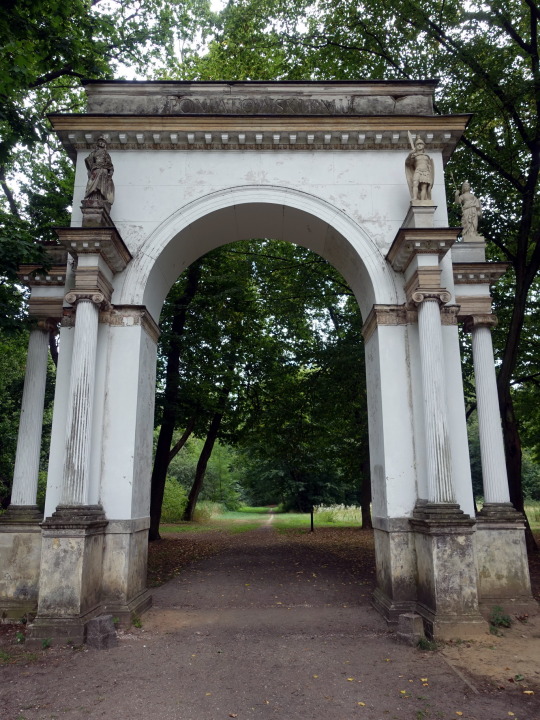
The triumphal arch from Jabłonna's park, 2019
And collage of mine is an illustration to the part dedicated to the rest of the women, whose portraits I wasn't able find. And honestly, the evidence that they might have been Prince Józef's love interests is very weak. But, since historians from time to time do mention these ladies' names, I thought them worth being included as well…
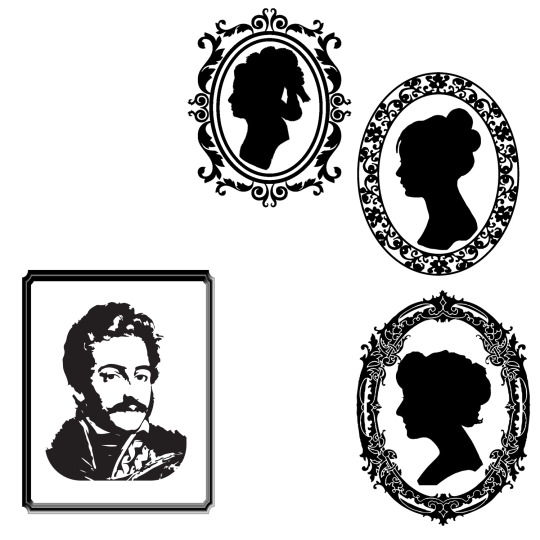
For example, in the prince's testament, together with Henriette de Vauban, Zofia Czosnowska and the above mentioned Anetka Potocka, there was mentioned Elżbieta Merlini, the daughter of Dominique Merlini, an Italian architect, the last main builder of the Polish-Lithuanian Commonwealth. But such concern for the architect's daughter may have been explained by a sense of moral debt to her father, which the prince Józef inherited from King Stanisław with the rest of the things.
Then, the list of Pepi's women sometimes complemented by another "Elżbieta" - Cichocka (although her real names were Emilia Karolina - or Katarzyna) née Bachmińska I° voto Szymanowska, II° voto Cichocka, III° voto Abramowiczowa. It is said she even sojourned in Jabłonna before 1810, until being apparently forced by Zofia Czosnowska to leave the place. After that Madame Cichocka went to Vilna, where she married her third husband. However, what IMHO should be taken into account in regards with this lady is that her second husband, Michał Cichocki, was an illegitimate son of Stanisław August, which might have made Prince Józef consider her a relative and thus take care about.
The same can be said about Madame Kicka - Józefa Martyna Rozalia née Szydłowska, who was a sister of Elżbieta Grabowska, another mistress of King Stanisław.
Sometimes the names of women who were friends and companions of Madame de Vauban are also included to the list of prince Józef's love interests. Those are: Anna Krasińska, a relative of general Krasiński and the wife of Mikołaj Oppeln-Bronikowski; Salomea Wielhorska née Dembińska; Anna Trębicka née Czerska, future wife of general Kamieniecki, and Józefa Potocka née Sollohub.
PS. As the regular visitors to the Copper Roof Palace are as well mentioned two ladies of the surname Walewska: Józefina née Lubomirska, the wife of Adam Walewski and the future wife General Witt, and Maria, the wife of Anastazy Walewski. The first of them was known for her kind of loose behavior, so presumably she might have at least flirted with Pepi; the second one is the famous Maria Walewska, but all I know about her makes me think her love for the emperor left no room in her heart for other men.
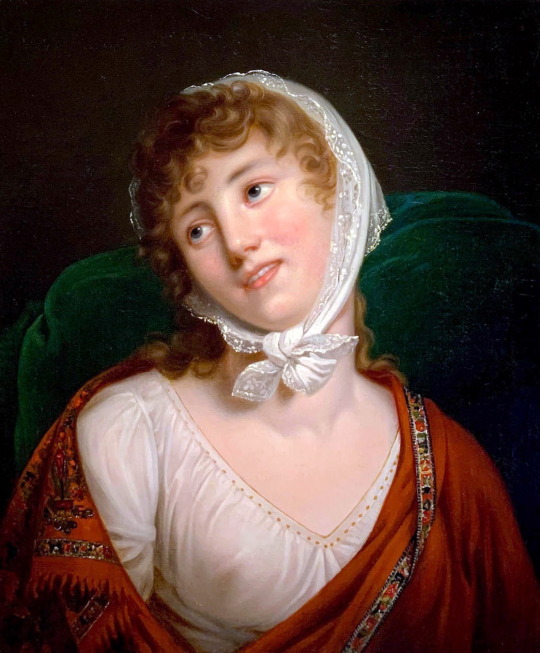
Portrait of Maria Walewska by Robert Lefèvre
#poniatowski#józef poniatowski#józef poniatowski’s women#queen Louise of Prussia#Giuseppe Grassi#Anetka Potocka#Jabłonna#Jabłonna palace#Maria Walewska#Robert Lefèvre
11 notes
·
View notes
Text

Chopin Dying, Lionello Balestrieri (Italian, 1872-1958)
"The Polish Countess Potocka sings a psalm at his dying request".
#chopin art#chopin#delfina potocka#death of chopin#lionello balestrieri#chopin triptych#piano#classical music#dark academia#fryderyk chopin#frederic chopin#psalm#october#pianist#romantic academia#polish music#art#italian art#italian painter#piano music
182 notes
·
View notes
Note
Who is your favorite character from each kingdom?
Molian - I'm sorry Francis it's going to be Auguste
Asidian - Benedicta
Setaris - Either Ada or Olympia Nicolai, Countess of Rosenshafen
Birye - Christina Amalia
Almswit - Anne Louisa, Duchess of Lindown
Athaigary - Archduchess Clementina
Riya - Joaquina, who happens to be the Empress of Athaigary
Tourene - Infanta Isabel
Rouvalon - Elisabet Ruthven
Aivac - Elzbieta Katarzyna Potocka
#kingdom of molian#kingdom of asidian#dukedom of setaris#principality of birye#kingdom of almswit#empire of athaigary#kingdom of riya#kingdom of tourene#the rouvalon islands#kingdom of aivac
2 notes
·
View notes
Link
#AlessandroStradella#AngelaGheorghiu#ArthurRubenstein#CarnegieHall#FredericChopin#MusicReview#NewYorkPhilharmonic#PianoConcerto
0 notes
Photo

(Ingres, Caroline Murat, 1814)
~
Countess Anna Potocka, the same lady who one day in the summer heat had been dragged by the Davouts through their garden wilderness in order to feed some d...ed partridges, a decade after Napoleon’s fall made a trip to Italy. In a much more civilised manner, I presume. Among other towns, she also visited Triest. (Taken from a publication called »Voyage d’Italie«)
Trieste can only be of interest to those who, like us, have seen some personality there, for the city does not offer much attraction. We met Caroline, one of Napoleon's sisters.
In 1826 she lived in a pretty country house close to the town. This charming villa was called Campo Mars; the queen had bought it from a merchant in Trieste and had arranged it with infinite taste. The care and activity she put into managing the work on this little property seemed to have made her forget that she had once possessed the most beautiful of kingdoms. An alley planted with vines - in the Italian style - led to a small arbour overlooking the sea and the busy road; this is where we spent the evening hours, so beautiful under the Italian sky; it was there that I heard the anecdotes I am going to tell.
The house, of impeccable architecture, contained, apart from the elegant flat of the queen, a large salon devoted to souvenirs. A magnificent portrait of Murat on horseback was the principal ornament; Caroline never presented this salon, where the portraits of the whole family, marble busts or paintings, were gathered. The general (Macdonald) alone did the honours.
[...]
I had seen the Queen of Naples in Paris at the time of Napoleon's marriage to Marie-Louise; she had given me the impression of a pretty woman on the throne. I found her with a figure that was still pleasant, as it had been in the past. One could feel that she needed to make herself loved by all those who came near her. The throne had disappeared, but the charm had remained, contrasting in a piquant way with an uncommon strength of soul, a serious spirit, a kindness, an equality of mood, which such great misfortunes had not been able to embitter or even disturb.
The countess also muses a bit about the relationship between Caroline and general Macdonald (Are they a couple now? Had they been? - Not that it’s important, really, but …), admires how perfectly Caroline imitated Marie-Louise’s Austrian accent and in passing relates some childhood anecdotes of Napoleon – which are doubtful mostly because by the time Caroline was born Napoleon and Joseph were already living in France. So how would Caroline be able to tell?
She later in her journey visits Naples and is astonished about Caroline’s rooms in the palace of Portici:
On visiting this royal residence, I expected to find there the rare combination in Italy of magnificence and taste. It seemed to me that Queen Murat, accustomed to the splendour of the Tuileries, would have been able to reproduce the palace of Armide, of which, better than any other, she was worthy of being the deity.
Caroline's appartment, still intact, did not meet my expectations. It was that of a duchess of the Faubourg Saint-Germain. Apart from a few mosaic parquet floors, there were no riches other than Lyon fabrics. A few genre paintings by the French School, a lot of Sèvres porcelain, and a number of bronzes of rather poor taste were the main ornament of this residence.
Madame la contesse is hard to please, as usual. At least she didn’t have to feed any birds this time around.
The book also contains three letters by Caroline to countess Potocka, mostly related to the marriage of countess Potocka’s daughter.
24 notes
·
View notes
Text
Countess Potocka Visits the Davouts
The moment is drawing near when I will say goodbye to Countess Potocka. In my next post she will share the scene with another memoir-writer, both of them describing the same person in quite contrasting ways. For now, the Countess is still starring on her own, compelled by good manners to accept an invitation to a meal she would have given her left arm to be able to refuse. Marie-Louise being absent, the Countess finds another handy target for her barbs.
The Countess, having ascertained whether her visit will be more convenient in the daytime or in the evening (daytime), gets dressed in new, fashionable and expensive attire, though she is much bothered by her shoes (too small?). I can't help but think that this outfit was meant to impress the Davouts with her superior status and unimpeachable pedigree - something simpler would have been preferable, as we shall see. Since it's already three in the afternoon when she appears at her hosts' door, maybe they were not expecting her anymore, even if we assume she had advised them this was the day of her visit. At least the Countess is honest enough to state Madame Davout had treated her well in the past.
C'est ainsi que j'allai chez la maréchale Davout, qui m'avait comblée de prévenances pendant son séjour à Varsovie, du temps où son mari commandait en Pologne. Comme elle passait les étés à Savigny (1), c'est là qu'il fallut aller la chercher. J'envoyai à son hôtel en ville quelle serait l'heure la plus convenable pour faire ma visite, - on me répondit que ce serait dans la matinée. Je me rendis donc à Savigny par un soleil brûlant, mal garantie par un très petit chapeau orné de violettes, et très gênée dans mes brodequins lilas parfaitement assortis à une robe montante en gros de Naples de même couleur ; - madame Germont, oracle de la mode, avait elle-même combiné toute ma toilette.
[...]
[J]e me promettais une visite agréable. L'hôtel de la maréchale, à Paris, m'avait donné une grande idée de son goût et de son opulence, et je pensais la trouver luxueusement établie à Savigny. J'arrivai vers trois heures. Le château, entouré d'un fossé et d'un mur, avait pour entrée une porte hermétiquement fermée. L'herbe croissait dans les fossés ; - on eût dit une habitation abandonnée depuis maintes années. Mon laquais, ayant enfin trouvé le cordon de la sonnette, une petite fille assez mal vêtue vint, au bout de quelques minutes, demander ce qu'on désirait.
- Madame la maréchale est-elle à la maison?
- Oh ! pardonnez-moi, qu'ils y sont, et M. le maréchal aussi, répondit la fillette.
Et vite elle accourut appeler un des hommes du château, qui se mit à la suivre sans se presser et tout en ajustant sa livrée.
Je me fis annoncer, et blottie dans la voiture, j'attendis encore assez longtemps, ne sachant trop si je devais insister ou simplement laisser une carte.
Au bout d'un petit quart d'heure un valet de chambre se présenta enfin à la portière du carrosse et me fit entrer dans une vaste cour ; il s'excusa des lenteurs du service, m'avouant sans façons qu'à l'instant où j'étais arrivée, les gens travaillaient au jardin, et que lui-même était occupé à nettoyer le verger.
On me fit traverser plusieurs salons complètement démeublés ; la pièce où l'on m'introduisit n'était guère plus ornée que les précédentes, mais au moins il y avait un canapé et des chaises ! La maréchale ne tarda pas à apparaître. Je m'aperçus aisément qu'elle avait fait toilette pour moi, car elle attachait encore quelques épingles à son corsage. Après quelques minutes d'une conversation languissante, elle sonna pour faire prévenir son mari. Puis nous reprîmes notre entretien pénible. Ce n'est pas que madame Davout manquât d'usage ou fût dépourvue de cette sorte d'esprit qui facilite les rapports entre deux personnes du même monde, mais il y avait en elle une certaine roideur qui pouvait être prise pour de la morgue. Elle ne perdait jamais de vue le maréchalat ; jamais un sourire gracieux ne venait animer les traits de sa beauté sévère. [...]
Le maréchal arriva enfin dans un état de transpiration qui attestait son empressement ; il s'assit tout essoufflé, et, tenant son mouchoir de poche pour s'essuyer le front, il eut soin de le mouiller de salive afin d'enlever plus sûrement la poussière dont sa figure était couverte. Cet abandon un peu soldatesque cadrait mal avec les manières empesées de son épouse ; elle en fut visiblement contrariée. Me trouvant de trop dans cette scène muette, je me levai et voulus prendre congé, mais on me pria de rester à déjeuner. En attendant que le repas fût servi, nous fîmes une promenade dans le parc... Il n'y avait aucun chemin tracé, les gazons étaient de hautes herbes toutes prêtes à devenir des meules de foin, les arbres coupés pendant la Révolution repoussaient en manière de broussaille ; je laissais à chaque buisson des fragments de mes volants, et mes brodequins lilas avaient pris une teinte verdâtre. Le maréchal nous encourageait de la voix et du geste, nous promettant une surprise charmante !... Quel ne fut pas mon désappointement lorsque, au détour d'un massif de chênes adolescents, nous nous trouvâmes en face de trois petites huttes en osier ! Le duc mit un genou en terre et s'écria :
- Ah! les voilà... les voilà !...
Puis, modulant sa voix :
- Pi... pi... pi...
Aussitôt une nuée de perdreaux se mit à voltiger autour de la tête du maréchal.
- Ne laissez sortir les autres qu'au moment où les plus jeunes seront rentrés, et donnez du pain à ces dames... Elles vont s'amuser comme des reines, dit-il à un rustre qui remplissait les fonctions de garde-chasse.
Et nous voilà, par un soleil brûlant, donnant la becquée aux perdreaux !
La duchesse vida, avec un calme et une dignité imperturbable, le panier qu'on lui avait présenté. Quant à moi, je faillis me trouver mal, et, n'y tenant plus, je fis observer que le ciel se couvrait et que nous étions menacés d'un orage.
[...]
Le déjeuner fini, je m'esquivai en toute hâte, jurant, mais un peu tard, qu'on ne m'y prendrait plus.
Thus I went to the home of Maréchale Davout, who had showered me with courtesies during her stay in Warsaw, when her husband was in command in Poland. As she spent the summers in Savigny (1), it is there that I had to go and find her. I wrote to her Paris house to find out the most convenient time to visit her, and was told that it would be in the daytime. So I went to Savigny on a broiling hot day, little protected from the sun by a very small hat adorned with violets, and very uncomfortable in my lilac booties perfectly matched with a high dress in taffeta in the same color; - Madame Germont, the oracle of fashion, had herself arranged my costume.
[...]
I had promised myself this would be a pleasant visit. The Maréchale's Paris residence had much impressed me with her taste and love of fashion, and I thought I would find her luxuriously settled in Savigny. I arrived at about three o'clock. The door of the chateau, which was encircled by a moat and an enclosure, was hermetically sealed. Tall grasses were growing in the moat; the chateau had the appearance of having been deserted for many years. My footman having finally found the doorbell, a little girl, rather ill-dressed, appeared, after a few minutes, to ask what was wanted.
- "Is Madame la Maréchale at home?"
- "Oh, but yes, they are there, and so is the Marshal," answered the little girl.
And she hurried to summon one of the servants of the chateau, who proceeded to follow her at a leisurely pace, adjusting his livery as he went.
I had myself announced, and huddling in the carriage, I waited for quite a while, wondering whether I should insist or whether I ought to simply leave a visiting card.
After a mere quarter of an hour, a manservant finally appeared at the door of my carriage and led me into a vast courtyard; he apologized for the slowness of the service, informing me without particular deference that at the moment I arrived, the household staff was working in the garden, and that he himself had been engaged in tidying the orchard.
I was led through several completely unfurnished salons; the room into which I was ushered was hardly more ornate than the previous ones, but at least it had a sofa and chairs! The Maréchale presently appeared. I could easily perceive that she had just dressed up for me, because she was still busy fastening some pins to her bodice. After a few minutes of languishing conversation, she pulled the bellcord so her husband could be apprised of my presence. She and I then resumed our awkward conversation. It is not that Madame Davout's manners were lacking, or that she was deprived of that sort of wit which facilitates exchages between people of similar backgrounds, but there was in her manner a kind of stiffness which might be mistaken for arrogance. She never forgot about the marshalate; never did a gracious smile enliven the features of her austerely beautiful face. [...]
The Marshal finally arrived, his haste reflected in his heavy perspiration; out of breath, he sat down and, using his pocket handkerchief to wipe his forehead, he moistened it with saliva in order to more efficiently remove the dust from his face. This casualness, a bit too soldierly, contrasted sharply with the starchy demeanor of his wife; she was noticeably annoyed about it. Finding myself de trop in this silent scene, I rose and tried to take my leave, but I was enjoined to stay for a mid-day meal. While waiting for this to be served, we went a walk in the grounds... There were no paths, the lawn was covered with high grass ready to be turned into haystacks, the trees, cut down during the Revolution, were growing back as scrub; I left shreds of my dress's ruffles on each bush, and my lilac booties had taken on a greenish tinge. The Marshal encouraged us by voice and by gesture with the promise of a charming surprise!... What disappointment when, at the bend of a clump of stripling oaks, we finally stood in front of three small wicker huts! The Duke went down on one knee and exclaimed:
- "Ah! here they are... here they are!..."
Then, modulating his voice:
- "Pi... pi... pi..."
And at once a swarm of partridges began to flutter around the Marshal’s head.
- "Don't let the others go out until the youngest have returned, and give the ladies some bread... They are going to enjoy themselves like queens", he said to a roughneck who was the gamekeeper.
And there we were, under scorching sunshine, feeding partridges!
With unruffled and imperturbable dignity, the Duchess emptied the basket of bread she had been given. I, on the other hand, came close to fainting, and this being beyond my endurance, I pointed out that clouds were moving in and that a storm threatened.
[...]
Once we had finished eating, I left in greatest haste, swearing to myself that this visit would not be repeated.
(1) Savigny-sur-Orge [this note appears in the original text]
https://gallica.bnf.fr/ark:/12148/bpt6k5463019n/f278.item pp. 229-234.
So there went the Countess’s pleasant visit, just not quite as pleasant as foreseen. I confess that I share her feelings about the spit-moistened handkerchief. And I too have been in the excruciating position of trying to make conversation when there is nothing to converse about. But she did not expect to have her fancy dress shredded by unkempt scrub. All this while traipsing in uncomfortable booties ruined by grass stains, the reward for this being to witness Davout calling his partridges in a falsetto voice, and a final indignity, bringing her close to fainting (or was it the foot-pinching booties?): having to feed breadcrumbs to partridges, while being expected to have fun doing it. Pass the smelling salts.
The food must have been good, because she does not have a word of criticism about it. No word whatsoever about it, in fact. I suppose no artichokes were served.
My little finger tells me the Davouts were not sorry to see the back of her, unless her manners were so exquisite that she was able to feign delight through her visit. But then again there was this laboured conversation, so... no. They were glad she left.
42 notes
·
View notes
Photo

Léon Bonnat (French, 1833-1922)
Portrait of Emanuella Pignatelli, Countess Potocka, 1880
#Léon Bonnat#leon bonnat#art#french#france#french art#emanuella pignatelli#countess potocka#fine art#european history#european#brunette#female portrait#female#woman#fashion#countess#1800s
12 notes
·
View notes
Photo
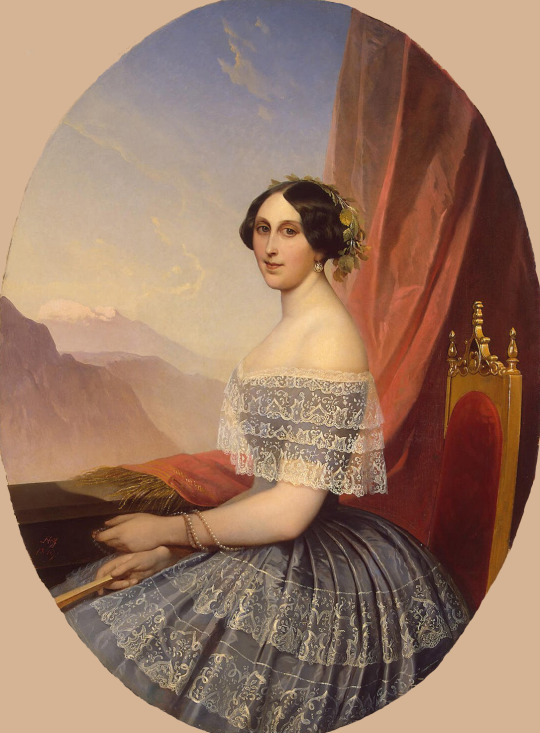

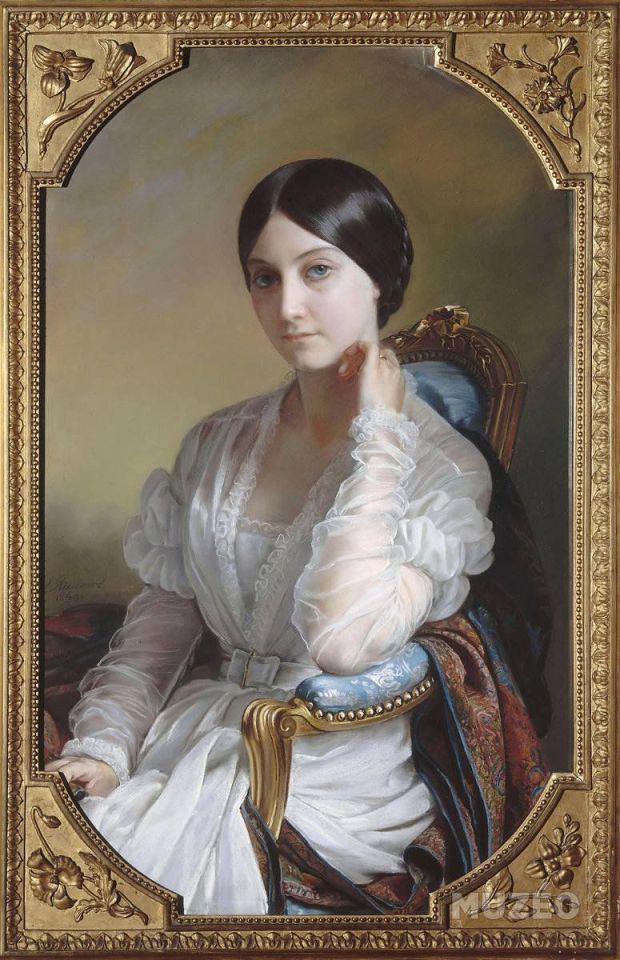

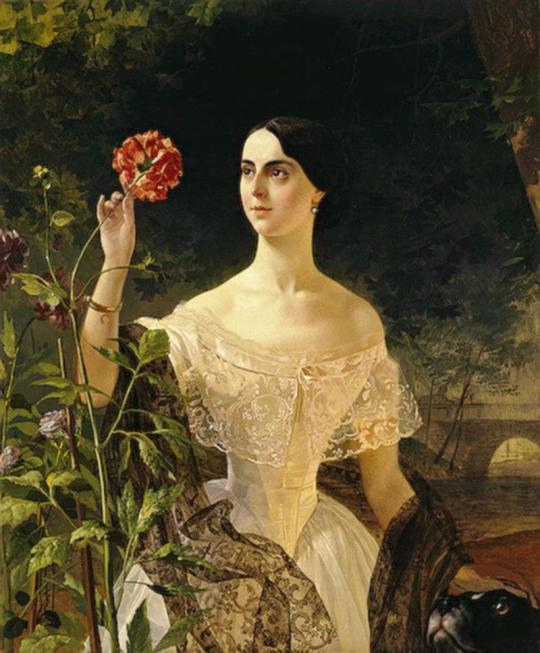





Closing the 1840s -
Top: 1849 Grand Duchess Maria Mikhailovna (?) by Carl Timoleon von Neff (Hermitage) 1085X1473 @72 492kj. The Hermitage lists this as "Portrait of a Young Woman." However Dru identified the sitter as Grand Princess Maria Mikhailovna in a posting to the Alexander Palace Time Machine Discussion Forum of 27 September 2011 and another poster agreed with some doubt.
This work appeared to be unfinished, the background was not over-painted in an oval all around, although a guideline was made and much of the oval was completed. I filled in the unfinished background with Photoshop.
Second row left: 1849 Elizabeth A. Poletika (1832-1854), daughter of Idalia Poletika, in marriage Mordvinova by Vladimir Ivanovich Hau (location ?). From Wikimedia 1536X1973 @200 434kj.
Second row right: 1849 Madame Leon Reisener by Henri-François Riesener (Musée national Eugène-Delacroix - Paris, France). From pinterest.com/CardRichelieu/portrait/ 775X1200 @72 254kj.
Third row: 1849 Comtesse Charles d'Agoult, née Marie de Flavigny, and Her Daughter Claire d'Agoult by Jean Auguste Dominique Ingres (Morgan Library & Museum - New York City, New York, USA). Old image from unrecorded source 2214X2677 @300 2.4Mj.
Fourth row left: 1849 Countess Sofia Andreievna Bobrinskaia, née Shuvalov by Karl Brullov (Hermitage). From liveinternet.ru/users/4000579/post386885193 800X968 @72 224kj.
Fourth row right: 1849 Delfina Potocka by Paul Delaroche (location unknown to gogm) photo - Maciej Szczepańczyk (Mathiasrex). From Wikimedia 1143X1418 @72 2.9Mp.
Fifth row: 1849 Harriet Sutherland-Leveson-Gower, Duchess of Sutherland by Franz Xaver Winterhalter (Dunrobin Castle, Sutherland, UK)> From Wikimedia; removed spots & flaws & fixed edges w Pshop 1086X1700 @300 409kj. She was a Lady-in-Waiting to and close friend of Queen Victoria. Dunrobin Castle is the family seat of the Sutherland family,
Sixth row left: 1849 Dowager Queen Adelaide by Richard James Lane after Franz Xaver Winterhalter (British Mueum). From their Web site 1737X2500 @300 1.8Mj.
Sixth row right: 1849 Erzherzogin Sophie von Österreich, Prinzessin von Bayern by Josef Kreihuber (auctioned by Neumesiter). From their Web site 2407X3307 @300 2.1Mj.
Bottom: 1849 Comtesse de Bellefonds by Jean-Hégésippe Vettier (Musée des Beaux-Arts de Bordeaux - Bordeaux, Aquitaine, France). From collections-musees.bordeaux.fr/ow4/mba/images/006-074-1559; fixed spots. bottom edge, & cracks w Pshop 820X1024 @72 246k.
#1849 fashion#Romantic era fashion#Maria Mikhailovna#Carl Timoleon von Neff#early Victorian fashion#straight coiffure#off shoulder neckline#lace bertha#floral headdress#Elizabeth A. Poletika#Vladimir Ivanovich Hau#V waistline#full skirt#Madame Leon Reisener#Henri-François Riesener#jacket#long sleeves#Marie de Flavigny#Claire d'Agoult#Jean Auguste Dominique Ingres#high neckline#collar#Countess Sofia Andreievna Bobrinskaia#Karl Bryullov#Delfina Potocka#Paul Delaroche#Harriet Sutherland-Leveson-Gower#Duchess of Sutherland#Franz Xaver Winterhalter#wrap
12 notes
·
View notes
Note
Who is this General Macdonald who was at Caroline's court? He certainly was not the Marshal, but does not appear in Wikipedia's list of generals who served France during the Revolution and the Empire. Was there an Italian branch of the MacDonalds who emigrated after 1745?
Details on him are sparse. He was not a marshal, or, as far as I’m aware, any relation to the French marshal of the same name. Francesco Macdonald was born in either 1776 or 1777 (I’ve seen both years given) in Pescara. He attended the Nunziatella Military School as a child and took part in the siege of Toulon as a soldier in the army of King Ferdinand of Naples when he was only 16 years old. But after Napoleon’s Italian campaign, he crosses over into the French army; after Ferdinand is driven out of Naples, he will serve under Masséna. He eventually becomes one of Murat’s most loyal generals in Naples and, in 1814, is made his minister of war. He remains loyal to Murat even after his defeat at Tolentino (when many of Murat’s other generals began abandoning ship), and accompanies Caroline Murat and her children to Trieste, where he joins them in exile.
Allegedly he and Caroline married at some point, but it is impossible to be certain of the year. Napoleon first reads reports of their marriage in Vienna in a newspaper in 1817; the news sends him into a rage (Gourgaud attributes this news being the cause of the Emperor’s sour mood for some time afterwards). But I’ve also seen 1830 attributed as the date of their marriage. The historian Jean Tulard seems to think 1817 is the more credible version, but who knows. It seems to have been primarily a marriage of expediency; Macdonald went to France on a number of occasions to advocate on Caroline’s behalf to try to have Murat’s former properties in France restored to her (or to at least be compensated for them). They had no children together. Macdonald died in 1837 in Florence, two years before Caroline.
There are a couple of recollections I’ve come across of Macdonald and his relationship with Caroline during the exile, as observed by Juliette Récamier and Countess Potocka, both of whom visited Caroline during their travels in the 1820s.
Mme Récamier writes of Macdonald that he
had been aide-de-camp to King Joachim, and Minister during the regency of Queen Caroline. He had never left the widow and children of his old master, and was now their only friend and courtier in adversity. The queen, whose skin was as fair as a lily, was still singularly pretty, almost retaining the brilliancy of her youth. She had grown stout; and, as she was not tall, her figure had not gained in elegance. She was animated in conversation ; and, from her caressing manners, it was easy to see, that, when she wished to please, she could exercise great powers of fascination. Her intercourse with her daughter was full of the most confiding tenderness. Her bearing to General Macdonald was affectionate, with a shade of authority.
(Jeanne Françoise Julie Adélaïde Bernard Récamier, Memoirs and correspondence of Madame Récamier, Boston, 1867, pages 240-241.)
Countess Potocka writes that
A loyal friend remained. The qualities of this man, like his attachment, were superior; the elevation of his soul was reflected on his noble face. An infinite sweetness was found in exploring the character of a man whose existence was composed, so to speak, of devotion and delicate feelings. Such was General Macdonald, who was said to be secretly married to the Queen.
During the six weeks that I saw them daily, I perceived nothing which could make me adopt or reject this idea; on one part, the most frank friendship and well-founded esteem; on the other, the most sustained respect and the most complete abnegation. Such were the relations that existed between them. It is probable that love had passed by them, and what remained did honor to them both.
(Countess Potocka, Voyage d’Italie (1826-1827), 1899 edition, pages 5-13.)
Macdonald was something of an amateur artist. Here is a painting he did of Caroline with a servant in 1825:


I believe he also made drawings/paintings of the Murat children, but I can’t recall having seen them. If I find any of them I’ll post them.
#Francesco Macdonald#Caroline Murat#Caroline Bonaparte#Juliette Récamier#Countess Potocka#memoirs#asks
21 notes
·
View notes
Photo

Death of Chopin (1885). Felix-Joseph Barrias (French, 1822-1907). Oil on canvas. Krakow National Museum.
Barrias may have used the description of Chopin's last moments which was noted for posterity by Solange, the daughter of George Sand and the wife of the sculptor Clésinger: “One October evening in 1849, the 16th, approximately twenty people were fearfully waiting in the living room (...) Chopin had someone ask whether Countess Potocka was also in the living room, and if she would sing. The piano was moved closer, the doors were opened, and the beautiful Countess began to sing. She sang with a broken heart, a voice full of tears! The gathered guests fell on their knees, stifling a sob.”
299 notes
·
View notes
Text
Józef Poniatowski’s children and descendants
Because a couple of months ago there’s been a discussion about Napoleon marshal’s children I decided I out to share with you the info about Józef Poniatowski’s issues and descendance.

Though never married, prince Józef nevertheless had two illegitimate sons.
The oldest one was Józef Szczęsny Mauricy Chmielnicki, born on the 17th of September, 1791.
The mother of the boy was most probably Poniatowski’s mistress of that time, the actress named Małgorzata Magdalena Wiktoria “Zelia” Sitańska (though there are as well versions it might have been another woman, for example, Zelia’s step-mother, also an actress - more on the topic I wrote here)
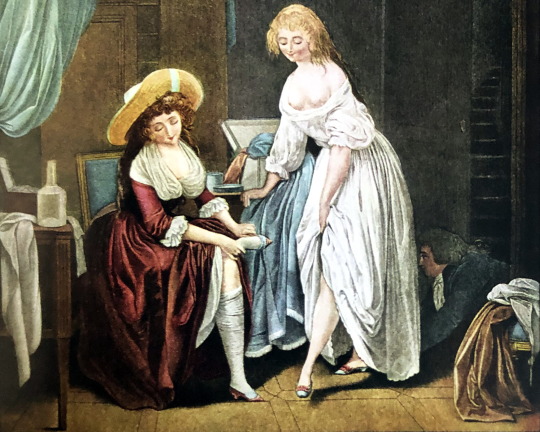
Zelia and here step-mother, a colored engraving
As for the fate of the boy - in his youth (before 1807) he started a military career in the Army of... Austria. Most probably it was prince Józef himself who arranged it, because his career started in the Austrian army too. (Another question is why Poniatowski didn’t “transfer” his son into the Army of the Duchy of Warsaw after the latter had been created, but, I’m afraid, we’ll never know the answer.)
And when in 1809 Austria attacked the freshly created Duchy, Józef Chmielnicki took part in the war... on the side of the Austrians. (And his father kinda accepted this, because in his will written 3 years later, in 1812, Poniatowski mentioned not only his firstborn but as well the fact that the latter was an officer in the Austrian Army.)
Chmielnicki fought as well in the next coalition wars, in 1812-1815 (against Napoleon as well), in 1831 he fought in defense of the Roman ecclesiastical state against local insurgents; for this he received the papal Order of St. Gregory. He also had the Austrian Military Cross. In 1856 he retired with the rank of colonel. He died unmarried in Vienna in 1860.
Unfortunately, I wasn’t able to find any image of Józef Chmielnicki, but in his military service records there is a little bit on his appearance:
Tall, of good health, very lively temperament and honest and reliable character. Polite and tidy; sometimes a bit violent and not always consistent. Zealous and active, with a special penchant for service in rifle units. He was wounded twice. He is fluent in German and Polish in speech and writing, speaks French and a little Italian. A very good staff officer, suitable for a regiment commander.
More do we know about Prince’s Józef’s other son, who was born on the 18th of December, 1809 in Warsaw and was then was given the name Józef Karol Ponitycki.

Józef Peszka, Portrait of Józef Ponitycki, 1815
As for Józef the second mother - there are no doubts in it, it was prince Poniatowski’s another mistress, Zofia Czosnowska née Potocka (more about her - here).
Though Czosnowska was married, prince Józef acknowledged her child and mentioned him in his will.

A miniature showing Ponitycki at the age of ten
The boy’s mother, however, didn’t care for her child much. Having divorced her official husband she married again in 1815, then placed her son in the custody of his aunt, prince’s Józef sister countess Maria Teresa Tyszkiewicz.
In the 1821 countess Teresa became the boy's legal guardian (Czosnowska officially gave him up) and in 1828 adopted him, changing his surname from Ponitycki to Poniatowski and adding Maurycy (Maurice) as his third name, thus making the boy the namesake of her long-term love Charles Maurice de Talleyrand.
And a little bit before, in 1826, Józef the younger gained French citizenship, and at the age of 18 (1827) he volunteered to join the French army.
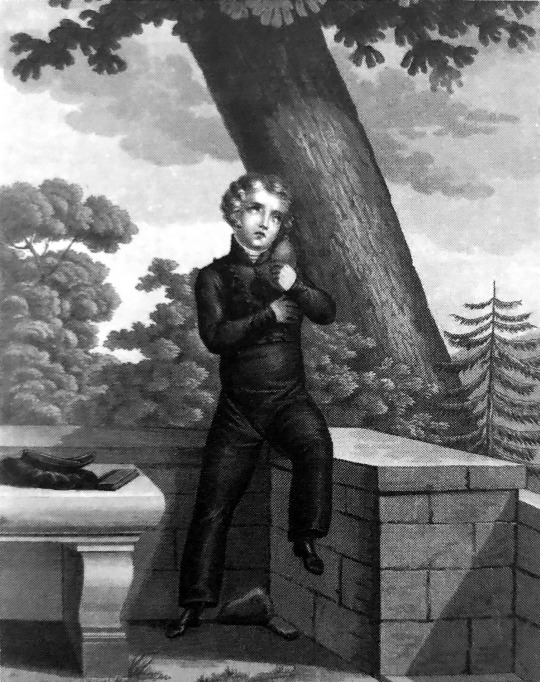
An anonymous painter, Prince Józef's son grieving after his father, 1820
The enlistment papers say that he was a healthy, blue-eyed, tall (1.79 m) blond, oval face, strong chin and aquiline nose. After graduating from school, he took part (as chasseur sergeant) in the Greek campaign in the Peloponnese (1829), later he was transferred to Algiers (1830), but he quickly returned to France.
During the July Revolution in Paris that year Poniatowski was among those soldiers who were putting it down, but when a year later the November Insurrection broke out in Poland he, together with his friend, Count of Montebello, a son of the Marshal Lannes, went to Poland to join the uprising. After the fall of the uprising, Józef returned through Galicia to France, where joined the rifle regiment as a captain and took part in the war in Algiers with Abd del-Kader in the years 1832-1836.

Józef Ponitycki-Poniatowski charges the camp of Emir Adb-el-Kader, a drawing by a French painter Eugène Chaperon
In 1839, driven by longing for his homeland, Poniatowski came to Kraków and made efforts to obtain permission to return to Warsaw. But the Russian Governor Paskevich refused him entrance and even tried (unsuccessfully) to confiscate) properties Józef inherited from his father and aunt.
Not being allowed to return to Poland, Poniatowski returned to France and to his regiment. He died on February 15, 1855 in Tlemcen, Algeria, and was buried there.
As for Józef Karol Poniatowski’s private life - in 1836 he married an Englishwoman, Maria Anna Semple. They have two children - a son, Józef Stanisław, born in 1837, and a daughter, Maria Teresa, a year younger.
Józef Stanisław joined the army at the age of 17 and went on the Crimean campaign. During the siege of Sevastopol, he was appointed lieutenant for his bravery. He then served in the cavalry regiment. He left the service due to ill health. In 1866 he married Léonide Marie Victoria Charner, the daughter of a French admiral, the chief commander of a sea expedition to China.
Six weeks after his marriage with Léonide Charner in 1866 he became mental ill. From 1880 until his death July 20, 1910 in Geel, Belgium, where he resided as a psychiatric patient in the wellknown Geel "Colonie des Aliénés''. (Many thanks to Werner for providing me with this information).
As for Józef Stanisław’s issue - there we have a kind of discrepancy. According the Polish sources like, for example, the Genealogy of the Descendants of the Great Sejm , he died childless but according his profile at geni.com he did have a son, named André whose descendants still live in the US. (The site doesn’t allow to see all the data but it is highly probably that the direct male line continues till our days.)
Maria Teresa, after the death of her father, was taken care of by the Duchess d'Eckmühl, the widow of the Marshal Davout. In 1859, Maria Teresa married Louis de Guirard, Comte de Montarnal, grandson of Marshal Ney. He was an official in the Ministry of Treasury. They had seven children: three sons and four daughters. But neither of those, according both the Genealogy of the Descendants of the Great Sejm and Geni.com had issue.
What’s more, according Geni.com Józef Karol Poniatowski after the death of his first wife married again. That time he took as a wife a woman named Elżbieta Fuchs, and they have a son named Wojciech Józef. That Józef, it looks like, was married, but no information about his issue is provided.
#Poniatowski#józef poniatowski#zelia sitańska#Józef Szczęsny Mauricy Chmielnicki#zofia czosnowska#Józef ponitycki#józef karol maurycy poniatowski#józef poniatowski's children#józef poniatowski's descendants#józef peszka#eugène chaperon
22 notes
·
View notes
Text

Countess Katarzyna Potocka
2 notes
·
View notes
